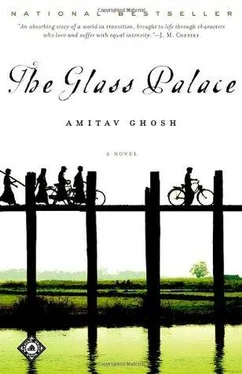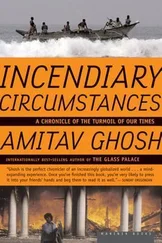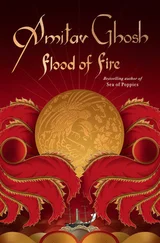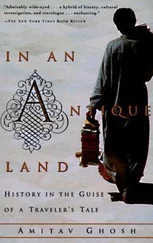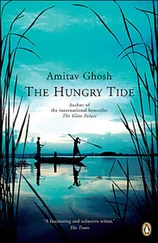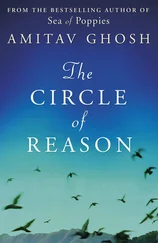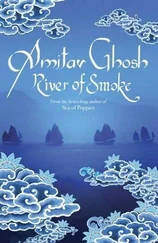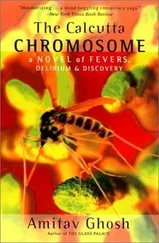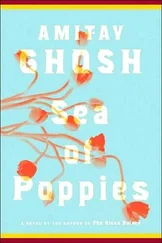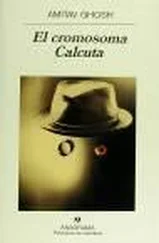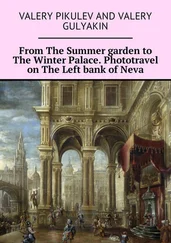‘That was my grandfather,’ Jaya said, by way of explanation.
The guard had already lost interest in Rajkumar. Through all this his eyes had kept straying to Dolly, seated in her corner beside Uma, her body half turned against the camera as though to defend herself from its gaze.
Dolly was dressed in a green silk longyi and a white blouse. Her face was long and slender, with a scaffolding of finely moulded bones standing outlined beneath her skin. Her hair was tied back, but a single strand had escaped, curling down from her temple. She was wearing no jewellery, but she had a spray of flowers, white-petalled frangipani, pinned above one of her ears. In her hands she was holding a garland of white jasmine.
‘She’s very beautiful,’ said the guard.
‘Yes,’ said Jaya. ‘Everybody said so. .’
The next day was Jaya’s last in Ratnagiri. In the late afternoon she hired a scooter-rickshaw and asked the driver to take her to the Bhate beach. The scooter drove through the town, past the red-brick buildings of the high school and college, over the bridge that crossed the estuary, to a beach on the southern side of the bay. In the distance, the sun had swelled to fill the mouth of the bay, growing ever larger as it dipped towards the horizon. The sand was copper-coloured and it slipped beneath the water at a gentle incline. Coconut palms grew thick along the edge of the beach, their trunks leaning thirstily into the wind. Along the line where the sand changed into soil there was a densely tangled accumulation of grass and shells and dried seaweed.
It was there, hidden in the undergrowth, that Jaya found what she was looking for — a small stone memorial to her great-uncle, the Collector. The engraved lettering was worn thin by the combined action of wind, water and sand. There was just enough light to read the inscription. It said: ‘To the memory of Beni Prasad Dey Esq., District Collector, 1905–1906.’ Jaya stood up to look at the windswept beach, sloping gently down to the waves. The red sand had turned grey with the setting of the sun. Uma had told her, long ago, that if she were to walk from the memorial stone to the water, in a straight line, she would cross the very spot where the Collector’s body had been found, along with the wreckage of his capsized boat.

On her return to Calcutta, Jaya began to look through the huge collection of documents and papers that Uma had left her, in her will. Jaya had occasionally toyed with the idea of writing a biography of her great-aunt; an important publisher had even offered her a contract once. Jaya knew that there had been a great revival of interest in Uma recently, as a pioneering political figure. There was bound to be a biography soon — she was loath to think that it would appear under someone else’s name.
It took Jaya several days to sort through Uma’s papers, many of which had been eaten into by insects. The strange thing was that the more she read, the more she found herself thinking of Rajkumar. It was as though in this one regard, childhood habits of associative reasoning had remained with her. Through all the years that she’d known him, her grandfather had lived downstairs, in a small anteroom in Uma’s flat. There was no inference of conjugality in these living arrangements: Rajkumar’s status in the household was understood to fall somewhere between that of poor relative and employee. But the geography of the house being what it was, it meant that for Jaya, to think of the one was to think of the other: to go down to see her grandfather meant also seeing her great-aunt.
Recollections came flooding back to Jaya. She remembered the particular tone of voice in which Rajkumar would say, several times each day: ‘Ah, Burma — now Burma was a golden land. .’ She remembered how he’d liked to smoke Burmese-style cheroots — longer and thicker than bidis but not as dark nor as big as cigars. Cheroots of this kind were not easily to be had in India, but there were certain substitutes that Rajkumar deemed acceptable. Not far from Lankasuka there was a paan shop that stocked these cheroots. Jaya would sometimes walk to this shop with her grandfather. She remembered how he’d narrow his eyes when he was lighting a cheroot. Then he would blow out a huge cloud of grey smoke and begin: ‘Ah, Burma — now. .’
The paan-wallah who owned this shop was more irascible than most. She remembered an occasion when she’d heard him snap at Rajkumar: ‘Yes, yes, no need to tell us again. Your Burma is so golden you can pluck nuggets out of people’s farts. .’
She remembered how she’d go with Rajkumar to visit the Burmese temple in north Calcutta. She remembered the people who’d gather there — many of them Indians, people who’d left Burma in 1942, just like Rajkumar. There were Gujaratis, Bengalis, Tamils, Sikhs, Eurasians. In the temple they would all speak Burmese. Some had done well after their departure. They’d built new businesses, made new homes for themselves; others had dedicated themselves to their children and grandchildren — in much the same way that Rajkumar had built his new life around Jaya. Not all the people who came to the temple were Buddhists, by birth or conviction. They came because this was the one place where they could be sure of meeting others like themselves; people to whom they could say, ‘Burma is a golden land’ knowing that their listeners would be able to filter these words through the sieves of exile, sifting through their very specific nuances. She recalled how they had thirsted for news of Burma — longed to hear word of those who had been left behind. She remembered the stir that greeted new arrivals; how they would be besieged with questions: ‘And what about. .?’ ‘. . and did you hear about so-and-so?’ Rajkumar was always the noisiest of the questioners, taking advantage of his booming voice to shout questions — questions about someone with a Burmese name; someone whom she had not known to be her uncle until Bela told her at the age of ten — her uncle Dinu, whom she’d never met.
These memories provoked a new chain of thought. Jaya put away Uma’s papers and pulled out a file of her own — of old clippings that she had compiled over the last nine years. She’d started the file in 1987, on reading about the birth of a democracy movement in Rangoon. These events had rekindled a dormant interest in the land of her birth. She had tracked the emergence of the movement’s leader, Aung San Suu Kyi, and had cut out many magazine and newspaper articles. In August 1988 when the military junta struck back, imprisoning Aung San Suu Kyi and unleashing a savage campaign of repression, Jaya had sat up nights, listening to the BBC. She had bought pamphlets that described the bloodshed that followed: the mass shootings, the imprisonments, the scattering of the activists.
Now, as she looked through the yellowing contents of her file, Jaya’s attention was caught by a magazine photograph: a picture of Aung San Suu Kyi. It struck her that there was something different about the photograph; it had a quality that set it apart from most magazine illustrations. The photographer had caught Aung San Suu Kyi’s fine-boned face in a moment of quiet reflection; there was something in the framing of the picture that reminded her of the silver-framed photographs that stood on Bela’s dresser.
Jaya glanced at the line of fine print on the top edge of the picture. The photograph had been credited to one U Tun Pe. She said the name out loud and something stirred, deep within the settled sediments of her memory. She got up and went to Bela’s room. ‘Do you remember Dinu-kaka’s Burmese name?’
Читать дальше
Конец ознакомительного отрывка
Купить книгу
